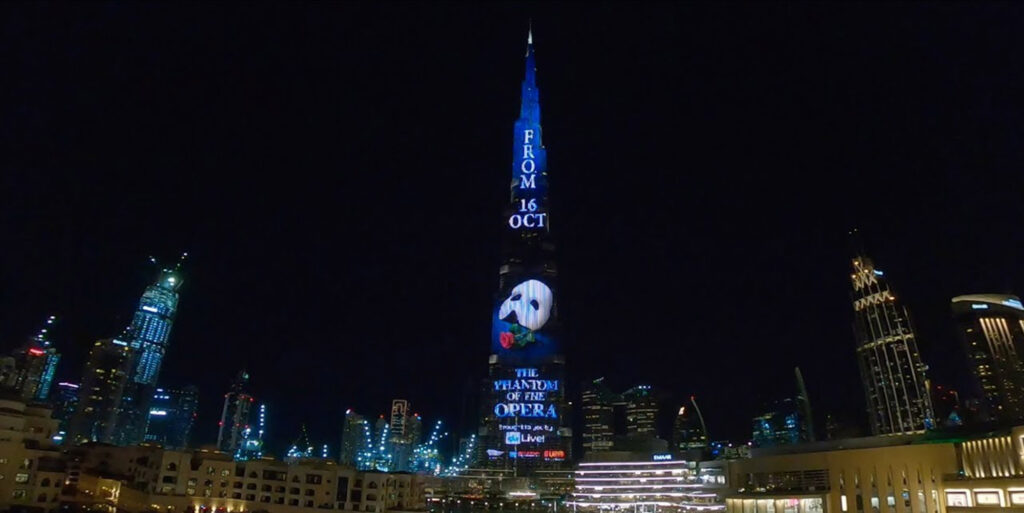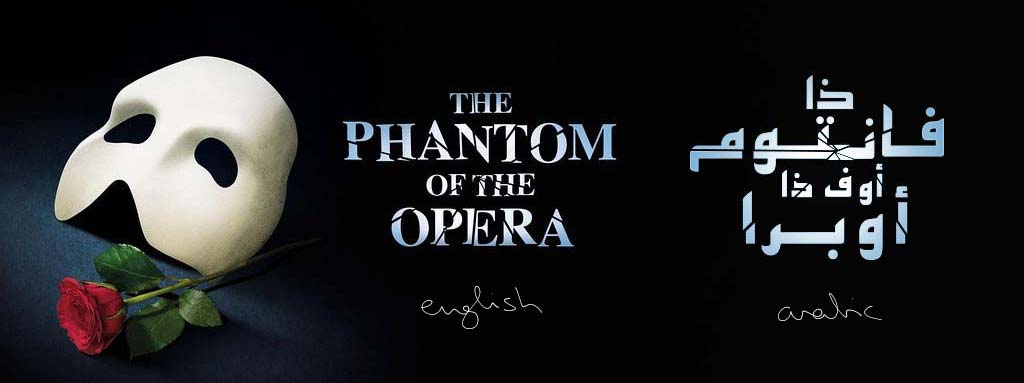MOTION GRAPHICS
When My Design Lit Up the World's Tallest Building, Burj Khalifa
CLIENT: Dubai Opera (Emaar Entertainment)
LOCATION: Dubai, UAE
Brief
Create a promotional video for “Phantom of the Opera” to be displayed on the Burj Khalifa.
Software Used:
- Adobe After Effects
- Adobe Photoshop: for graphic edits
The Challenge:
I created this while working full-time in Dubai as a Brand Specialist and Multimedia Designer in the marketing department of Dubai Opera. (This is just one of my projects—see more here) As part of the Emaar Group, which also owns Burj Khalifa and Dubai Mall, we promoted our show on Burj Khalifa to attract both local audiences and tourists.
This is the first time we have used the Burj Khalifa to advertise our shows. Since we haven’t done anything like previously, I initially have no idea what size, time, etc. I should create to make it work.
Given that this is the branding of The Really Useful Group (Andrew Lloyd Webber), we must submit any promotional materials to them for review before they are released, even if a small detail is modified.
My Creative Proposition:
Existing videos have been provided by The Really Useful Group and they are being used to promote the show. Therefore, the optimal solution is to make use of the entire running time of that video and then reserve some of that time exclusively for “Du,” a telecommunications company that sponsored the show under the terms of the partnership.
Therefore, the very first thing that came into my head to make was an Arabic translation of the title “Phantom of the Opera.” I figured that this would be a good way to add a personal touch that would help the locals become more familiar with the show. Because it also has an animation of a broken glass, I did it first thing before diving into the rest of the video.
The Burj Khalifa team provided me with the necessary specs and a sample video that included guides to help fit any design into the unique shape of the building. As expected, the dimensions were anything but typical, and the irregular shape of the Burj Khalifa presented a distinct challenge. I had to adapt a standard 16:9 ratio video to this towering, tapering canvas.
To make the most of this unconventional format, I decided to strategically utilize the title card—featuring the show’s title, dates, logos, and call-to-action—throughout the entire duration of the video. This approach ensured that the key information was consistently communicated, even within the short window of time we had to capture the audience’s attention. By keeping the essential elements visible at all times, I aimed to maximize the impact of the message despite the challenging dimensions.
Phantom of the Opera trailer video in 16:9 ratio, which I edited for Dubai Opera
Final Design:
mockup of the complete audio-visual show I created
Given that the lower-middle section of the Burj Khalifa is the most visible and stable area, I positioned the main video content there. The narrow structure of the building meant I had to carefully adjust the video to ensure the primary subject remained clearly visible throughout.
The final production was an audio-visual spectacle lasting one minute and twenty seconds, complete with synchronized fountain displays that danced to the music. The show was strategically scheduled to play at night, when the area around the Burj Khalifa is teeming with tourists. This timing ensured maximum exposure and engagement. The video not only captivated the live audience but also garnered attention from prominent publications in Dubai and internationally, further amplifying its reach and impact.



